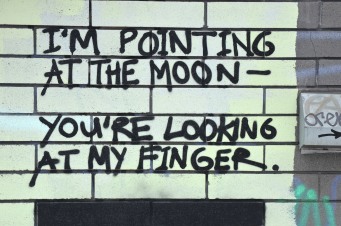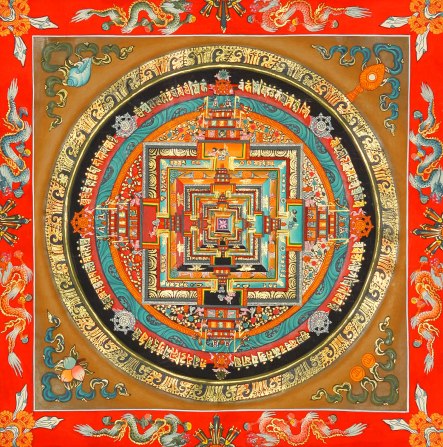This is Vol. 3 of the Occult Reading list, where I collect all the interesting stories and strange pieces of trivia I’ve picked up over the past week from books, articles, and webpages. Also included are the songs that have been on repeat for me this week.
Guaranteed to make you more interesting at parties.
Disclaimer: There’s no conspiracy between me and New Retro Wave–I just listen to their songs all the goddamn time. But if they want to talk sponsorship deals, I’m down to sell out and get some of that sweet 80’s merch.
Trevor Something, give me a call. We’ll work something out.

 THE Three Body Problem by Cixin Liu
THE Three Body Problem by Cixin Liu
This is the Hugo Award-winning sci-fi book by Cixin Liu, translated by Ken Liu. It’s garnered some unreal praise, and I finally got around to reading it. So far, I’m 200 pages in and I’m not a fan. Putting aside the difficulties of translation, the plot and pacing are where the book comes up seriously short. So far, the plot has been a very choppy clockwork affair, with the main character essentially shuttling himself from place to place, listening to exposition, then periodically popping in to the VR world of Three Body. Every exposition scene happens almost back-to-back, with Wang Miao acting as a plot-automaton who decides, “hey, let’s give this person a call,” followed immediately by “let’s visit this person,” and then “they told me to visit this person, so let’s go here and speak to this person.” Rather than Jack Bauer in 24, who is propelled from place to place by desperation, gunfire, and a constant stream of new discoveries, the countdown Wang faces doesn’t drive the action, and the only thing Wang needs to do is go to places so people can talk at him. There’s no tension or challenge to ferreting out the information he needs, and the plot comes off as a series of mechanical scenes strung together without much attempt at subtlety or tension. The scene in which Wang discovers the murder of Shen Yufei and listens to the revelations of her husband are the worst perpetrators of this.
On top of the lackluster plotting, the video game world of Three Body ends up being a bizarre, pseudo-metaphorical dream sequence. Unlike Neal Stephenson’s Metaverse in Snow Crash or William Gibson’s Grid in Neuromancer, the rules and logic of the virtual world are opaque and confusing. Characters can randomly speed up the passage of time as it suits them, the logic and mechanics behind player dehydration are completely unexplained (do they go into spectator mode? Log out?), and it’s not even clear if the entities Wang is encountering are NPCs or players. The most baffling question is about advancement: the game revolves around trying to predict the movements of the sun, but a succession of players (if they’re indeed human players) seem to put forth antiquated versions of the solar system. No human player but the protagonist seems to contribute to the game or its advancement but the protagonist, who always arrives at exactly the right time to see the key developments.
I haven’t finished the book yet, but already I’m feeling like The Three Body Problem is going to be a monumental disappointment.
 7 Different Ways Fantasy Has Used Language as Magic
7 Different Ways Fantasy Has Used Language as Magic
This is a nice survey of how different fantasy series have used language as the basis for magic systems (a topic I’ve written about in relation to both binary and poetry). It deals with the big-name franchises, including LoTR and Harry Potter, but also The Spellwright Trilogy and video games like Skyrim and Treasure of the Rudras.
I still remember opening up a book in Morrowind after clearing out a den of necromancers and reading about the Nords shouting down their enemies’ walls with the magic of their voices, and how the most powerful had to be gagged to keep their voices from destroying everything around them. At the time, I thought “They could never turn that into a real magic system. It’s cool flavor, though.”
So it was an awe-inspiring bash to the head to find out that that little, innocuous passage from the early 2000s was kept in mind across the development of Oblivion and brought to glorious fruition in a fully realized magical language and system in Skyrim. Next, I want to see the snake people from that one hidden continent!
 No Mother Tongue: Language in the world of Magic
No Mother Tongue: Language in the world of Magic
This is a cool little post from V.E. Schwab, author of A Darker Shade of Magic and A Gathering of Shadows, both of which I own (thanks, publishing friends!). Schwab touches on the difficulty of composing languages for a fantasy world, as well as the promise: she explains how the poetry and sound of language can reveal something about the nature of the world and its speakers, and how it can immerse a reader in the world of the story by forcing them “to learn as they go, just as travelers would, when passing through a foreign land.”
Schwab also touches on the dangers of fantasy languages: “Used poorly, fictional languages can feel like a wall, preventing all but the well-versed from feeling included in a world.” I’ve seen this pretty often, and it comes from the tricky management of a learning curve within the narrative, by which a reader learns about the world, the culture, and the events of the book. Introducing too much foreign information leads to alienation and frustration, like a mother spelling out words so she can speak over the head of a toddler. “Don’t you know what a ba’aleth is, reader? No? It’s very important.”
Fuck that noise.
Thoughts on Nomenclature in Fictional Worlds
This is just a couple thoughts from Eric Honour, who has a page on Medium. It’s mostly some criticism on the simplicity and lack of verisimilitude that characterizes language and naming in fantasy. One thing he touches on is how monolithic language and names become when the creator just sits down and pushes two words together like a caveman, like “Iron Walker” or (my personal pet peeve term from Dune) “lasgun”. But one particular insight from Eric struck me:
“This is something that turns me off about a lot of fantasy. It’s also something that I can see is difficult to navigate — having multiple names for things is more realistic, but also can feel like it’s overwhelming the reader. Real-life historical names are full of metonymy and misapplication and the shifting sands of living language, and that’s a level of complexity that might not even be advantageous to a fictional world. But not even making the attempt feels sort of lazy.”
Something that the articles from Tor and V.E. Schwab also touch on is that language shifts and changes to reflect its culture and its world. To create a language, or even naming conventions for armies, you have to think about how words and people use and abuse terminology. A great example is military slang and acronyms like FUBAR, SNAFU, BDU, and MOPP, or the backronyms of gang culture. There’s something more than the denotative meaning of words, a kind of vitality to them, and that’s what a lot of fantasy writers gloss over.
“Just Like You (Hazy Mountains Remix)” by Chromatics
One of my top three favorites from the world of New Retro Wave, Just Like You is one of those haunting love songs that evokes the kind of otherworldly, illusory lover that ELO sang about in Yours Truly, 2095, or even the twisted virtual love in Bad Religion’s I Love My Computer. It’s a song wrapped up in nostalgia and ethereal, lovesick illusions, and the reverb clings to your mind like cobwebs. Most disturbing (or enticing) of all is the idea of a doppleganger, a lover who “looks just like you/he even says the same things/he even wears the same clothes,” who ultimately “loves like you used to.”
“The Glory” by Reapers
The Glory is another of my top three favorites from the good folks over at New Retro Wave (THERE IS NO SPONSORSHIP DEAL), and one of my favorite songs, period. The contrast between the low, dirge-like like chanting and the full-throated, almost plaintive rock-and-roll yelling of the chorus gives the whole song a sense of loss and bitterness. The lyrics, which seem to be an ode to death, end up making it the perfect song for people interested in the dark side of the 80’s.
Like me.













 The Elements of Murder by John EmsLEY
The Elements of Murder by John EmsLEY An Incomplete History of the Art of Funerary Violin By Rohan Kriawaczek
An Incomplete History of the Art of Funerary Violin By Rohan Kriawaczek

 Cicada 3301 is my new obsession. Combining cryptography, anonymity, and strange ARG puzzles with mysticism and occult trappings, these bastards are probably the real-life
Cicada 3301 is my new obsession. Combining cryptography, anonymity, and strange ARG puzzles with mysticism and occult trappings, these bastards are probably the real-life 

 NON-FICTION: Zen Buddhism, Selected Writing of D.T. Suzuki, Edited by William Barrett
NON-FICTION: Zen Buddhism, Selected Writing of D.T. Suzuki, Edited by William Barrett NON-FICTION: A Burglar’s Guide to The City, by Geoff Manaugh
NON-FICTION: A Burglar’s Guide to The City, by Geoff Manaugh FICTION: Clarkesworld Year Six Anthology, Clarkesworld Magazine
FICTION: Clarkesworld Year Six Anthology, Clarkesworld Magazine MANGA: Opus, Satoshi Kon
MANGA: Opus, Satoshi Kon Wikipedia: Bagua
Wikipedia: Bagua The Five Animals in Martial Arts
The Five Animals in Martial Arts Luohan (Martial Arts)
Luohan (Martial Arts)















 This past week I finished I Am Alive and You Are Dead, a biography of Philip K. Dick, the author of Do Androids Dream of Electric Sheep (the inspiration for Blade Runner) and The Man in the High Castle. Dick won the Hugo Award in 1963, and ended up being the namesake of his own sci-fi award. I’d read Do Androids years ago, and it’s one of the few sci-fi novels whose ending made me cry.
This past week I finished I Am Alive and You Are Dead, a biography of Philip K. Dick, the author of Do Androids Dream of Electric Sheep (the inspiration for Blade Runner) and The Man in the High Castle. Dick won the Hugo Award in 1963, and ended up being the namesake of his own sci-fi award. I’d read Do Androids years ago, and it’s one of the few sci-fi novels whose ending made me cry.
